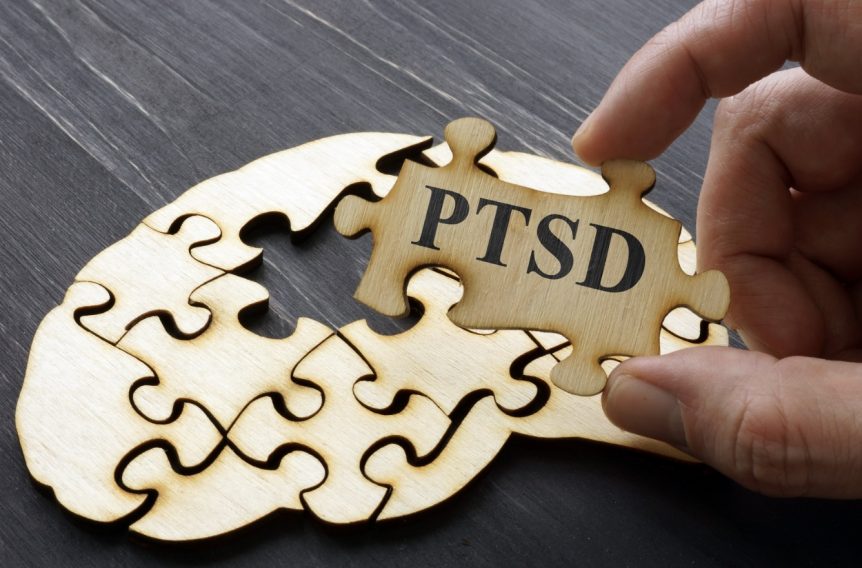June is PTSD Awareness Month –
How to Support Others and Heal from PTSD
In 2010, the US Senate declared June 27th National PTSD Awareness Day. Since then, it has been expanded to the entire month of June. Similarly, our awareness and understanding of PTSD continues to grow and expand, since its official recognition as a diagnosis in 1980. Below is a list of ways to learn about and support PTSD awareness, throughout the month of June and beyond.
Check out the VA Calendar: Soldier’s Heart. Shell Shock. Battle Fatigue. Beginning with the American Civil War, a new name would emerge to describe the symptoms experienced by soldiers returning from each subsequent US battle.
Part of raising awareness of PTSD is recognizing that it is not a diagnosis reserved for those who return from the harrows of combat. The first murmurs of this were during World War II when it was named by the broader term “gross stress reaction.” Nonetheless, veterans remain a large percentage of those who deal with PTSD, and were the first to bring attention and urgency to the issue.
The US Department of Veteran Affairs has published a calendar with an activity for every day in June, many of which apply to the general population. June 1 invites visitors to take a written pledge to raise awareness of PTSD as an individual or on behalf of an organization. Other options are finding and hosting a virtual PTSD awareness event, links to crisis resources and coaching apps, and invitations to listen to the stories of PTSD survivors and their loved ones.
Wear Your Support on Your Sleeve: PTSD awareness is symbolized by the color teal. Beyond being appropriately soothing, there is little mention as to why the color was chosen for this cause. It’s worth considering that just as blue, green, and white combine to make teal, the traits behind each color combine to create a supportive statement. Blue represents trust, calm, faith, strength, stability, power and confidence. Green represents balance, soothing, and peace. White means hope and light.
Ribbons and gestures may seem superficial, or worse, seem to call attention to the wearer rather than the cause. Yet, so much of the misunderstanding surrounding PTSD, and the isolation suffered by those who struggle with it, is due to the emotional effects of trauma occurring underneath an otherwise calm surface. By wearing colors or pieces sufferers can signal that they are dealing with more than meets the eye, inviting people to be gentle and understanding. Supporters can wear them to show support. Either way, any conversation is one more small inroad toward awareness.
Look into Treatment Methods: As awareness grows, so do the number of treatment options. One prevalent method is Cognitive Processing Therapy, which involves weekly sessions of 60-90 minutes over a twelve-week period, most of which consists of writing and talking about your traumatic event and its resulting effects. Prolonged Exposure Therapy primarily addresses the avoidance aspect of PTSD. Clients write a list of places or things they have been avoiding and learn to face them, one at a time. Stress Inoculation Training involves light massage and breathing techniques, and for those hesitant to share their trauma stories, it focuses more on changing the resulting feelings.
One method of treatment that is quickly gaining traction is Accelerated Resolution Therapy (ART). It integrates eye movements, with other therapeutic modalities such as Cognitive Behavioral Therapy, Psychodynamic Therapy and Guided Imagery. Under the slogan, “Keep the memory, lose the pain,” clients report experiencing significant relief after just one session. At least in one instance, it’s being used as a method to treat troops while they are still stationed, making it possible for them to return home with a clean slate, without losing any precious time to trauma.
Recently ART trained Chief Behavioral Health Officer Colonel Chris Atkins, offers this testament to the efficacy of the training from his station in the Middle East:
“ART has been an amazing gift to the troops here struggling with nightmares, combat trauma, body image issues, and even relationship concerns. ART has dramatically increased sleep and reduced anxiety and even panic attacks. I saw complete elimination in combat stress-related nightmares of enemy attacks even after 1 ART session! I have been following the scripts in every single session. Thank you Jennifer and team for an amazing gift of healing to our service members. Because of ART, my clinic was the busiest one in the Middle East. People kept referring their friends to work on THEIR scenes!”
Nearly 150 years after the world was introduced to the word “soldier’s heart,” we are closer than ever to healing.
If you or a loved one is suffering from PTSD and are interested in finding a therapist trained in ART click here.
If you are a therapist interested in incorporating ART into your practice and would like to learn more about trainings in your area click here.

